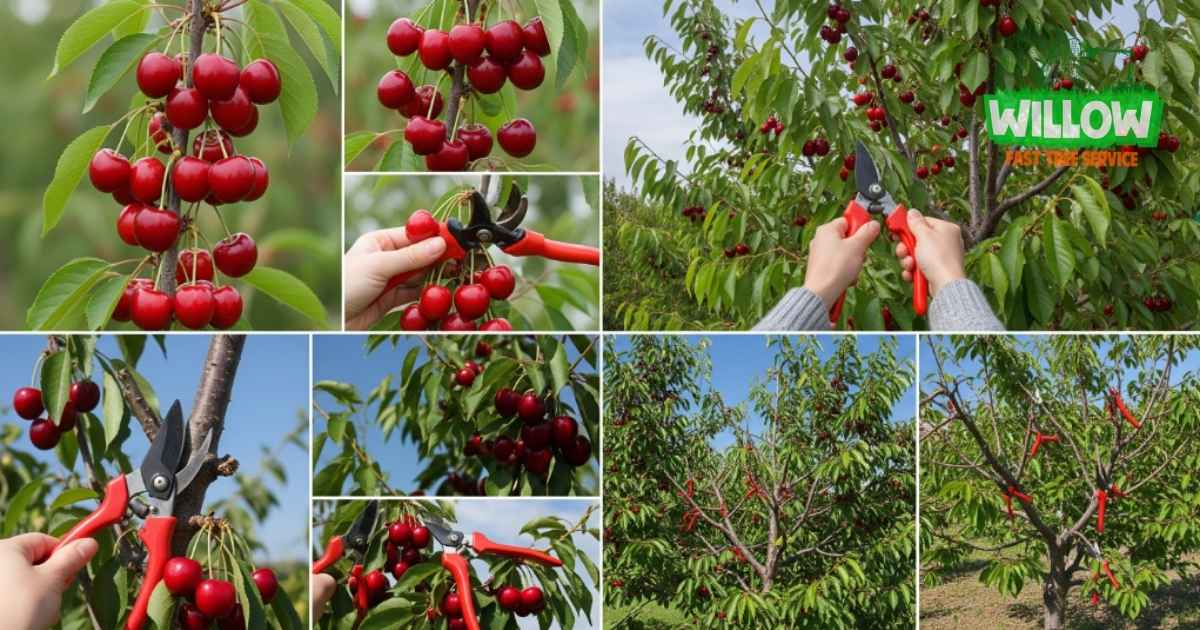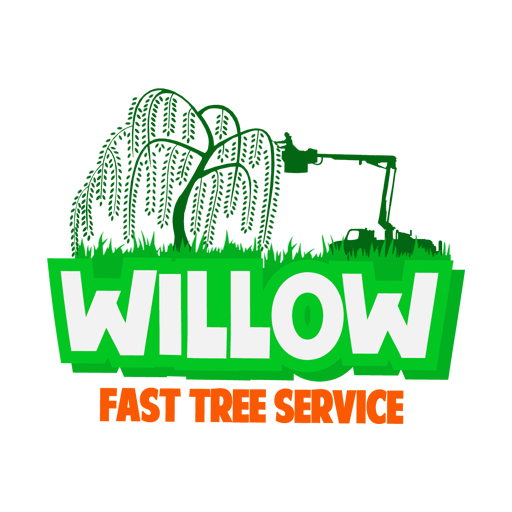If you have cherry trees in your yard, you probably look forward to their delicious fruit each season. But did you know that pruning is one of the most important factors in whether or not your tree produces a strong, healthy harvest? Without proper pruning, cherry trees can become overgrown, disease-prone, and far less productive.
In this guide, we’ll walk you through how, when, and why to prune fruiting cherry trees, especially in the climate of Norcross and the greater Metro Atlanta area.
Why Prune Fruiting Cherry Trees?
Pruning a fruiting cherry tree isn’t just about keeping it neat. It’s about setting it up for long-term success. Here’s why pruning matters:
- Encourages better fruit production by focusing the tree’s energy on strong, healthy limbs
- Improves air circulation to reduce disease risk
- Allows more sunlight to reach fruit-bearing branches
- Removes dead, damaged, or diseased wood
- Shape the tree for easier maintenance and harvesting
Cherry trees that are left unpruned often develop tangled, crowded branches, making them more susceptible to pests, fungus, and fruit loss.
When Is the Best Time to Prune Cherry Trees?
The best time to prune most fruiting trees—including cherries—is during the dormant season, when the tree has lost its leaves and isn’t actively growing.
For Georgia’s climate (Norcross/Metro Atlanta):
- Late winter (January to early March) is ideal
- Avoid pruning just before long wet periods to reduce fungal risk
- Never prune in fall, as it can stimulate new growth just before cold weather
For summer maintenance, light pruning is acceptable to remove water sprouts or fast-growing vertical shoots; however, significant cuts should be avoided until dormancy.
How to Prune Fruiting Cherry Trees – Step-by-Step
Start with the Basics
- Remove dead, damaged, or diseased branches
- Cut off any suckers or shoots growing from the base of the tree
- Eliminate water sprouts—those fast-growing vertical shoots on limbs
Identify and Develop Scaffold Branches
These are the main branches that form the tree’s structure. Choose 3–5 evenly spaced limbs around the trunk and remove others that cross, rub, or grow too closely together.
Shape for Airflow and Sunlight
Open up the center or upper canopy to allow sunlight to penetrate the entire tree. This helps ripen the fruit evenly and reduces the risk of mildew or rot.
Use Proper Cutting Techniques
- Always cut just outside the branch collar (the swollen area at the base of a branch)
- Make angled cuts to allow water to run off
- Use clean, sharp tools to prevent tearing the bark
Common Pruning Mistakes to Avoid
Even with the best intentions, homeowners sometimes do more harm than good. Here are the most common mistakes:
- Over-pruning: Taking off more than 25–30% of the tree in one season can shock it
- Topping: Cutting off the tops of main limbs disrupts growth and weakens the structure
- Flush cuts: Cutting too close to the trunk damages the healing ability
- Pruning at the wrong time: Late fall and wet spring cuts often lead to disease
Cherry Tree Pruning Techniques (Quick Table)
| Goal | Technique | Tools Needed |
| Shape a young tree | Scaffold branch training | Hand pruners, loppers |
| Encourage fruit growth | Selective thinning | Pruners, saw |
| Remove weak growth | Water sprout removal | Pole pruner |
| Maintain airflow | Open center pruning | Hand saw |
Georgia Growing Conditions and Their Impact on Pruning
In the Metro Atlanta region, cherry trees face specific challenges:
- High humidity promotes fungal growth if the airflow is poor
- Spring storms can break weak or overgrown branches
- Rapid spring growth may encourage overcrowding
Because of this, pruning cherry trees in late winter gives them a clean start for the growing season. A well-pruned tree stands up better to wind, grows stronger fruit-bearing limbs, and requires less corrective pruning later in the year.

Final Thoughts – Keep Your Cherry Trees Fruitful and Healthy
Cherry trees can be one of the most rewarding fruit trees in your yard—but only if you care for them correctly. Strategic pruning leads to healthier limbs, better air circulation, stronger fruit, and a longer-lasting tree.
If you’re unsure how to prune your cherry trees or want professional help for maximum results, don’t guess. Let an experienced local expert do it right.
Call Willow Fast Tree Services in Norcross, GA, for precise cherry tree pruning that helps you grow more fruit with less stress.
FAQ About Pruning Fruiting Cherry Trees
Can I prune cherry trees in summer?
Yes, but only lightly. Summer pruning is best for removing water sprouts or suckers—not for structural shaping.
How much should I cut off a cherry tree?
No more than 25–30% of the live canopy in one season. Gradual shaping over time is better than severe cuts.
Will pruning affect next season’s fruit?
If done correctly, pruning enhances fruit quality. But over-pruning or late-season cuts can reduce the yield.
Should I prune flowering and fruiting cherry trees the same way?
No. Flowering cherry trees are pruned for aesthetic purposes, while fruiting cherries require strategic cuts to support harvests.
How often should cherry trees be pruned?
Annually, during the dormancy of the structure. Light maintenance can be done throughout the growing season.

